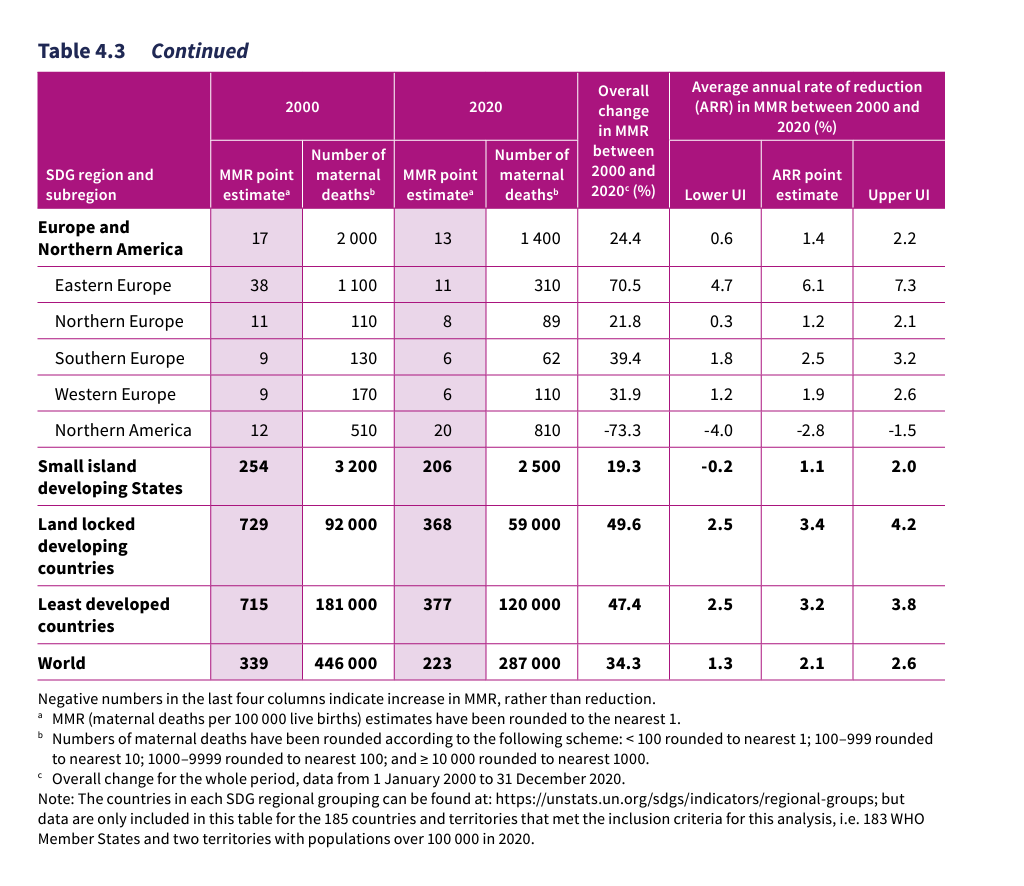In 2020 around the world 287,000 women died in childbirth or in the aftermath of pregnancy. Twenty years ago that figure that 446,000.
This is both a triumph and a tragedy.
Worldwide, between 2000 and 2020 mortality fell by 159,000. Of that reduction 118,000 or 74 percent came in Central and South Asia where mortality rates fell by two thirds between 2000 and 2020. Another 12 percent of the decline was contributed by East Asia. The tragedy is that over the last twenty years maternal mortality in Sub-Saharan Africa fell far less rapidly. The proportional rate fell in Africa too - by one third. But given the surge in the population of young women of child-bearing age, the number of mothers that died in Africa in 2020 was 202,000 - 70 percent of the global total - only 6 percent lower than in 2000.
There is no crueler marker of the misery and harm inflicted above all on women and children by poverty, underdevelopment and insecurity.
Source: WHO
In relative terms the mortality rate is almost two hundred times higher in West Africa than it is in the richest and most successful advanced economies. Over time that ratio of disadvantage has not improved. There has been no convergence. Comparing West Africa and Australasia, whereas Australia’s mortality rate has halved between 2020 and 2020 that of West Africa has decreased by only 20 percent, meaning that West Africa’s relative disadvantage has increased by more than 60 percent.
The most staggering numbers are for Nigeria, which has one of the highest relative rates of maternal mortality in the world. Because of its size, Nigeria alone accounts for 28 percent of all maternal mortality worldwide. Since 2000 Nigeria’s mortality rate has fallen by a mere 12.6 percent. Ghana by comparison saw an improvement of 46.5 %. Ghanian mothers still have a very high rate of mortality by global standards, but their rate of death is now one quarter that in Nigeria.
By this essential measure of progress, the stand-out success stories in Sub-Saharan Africa are Tanzania, Mozambique, Angola, Ethiopia and Rwanda. They managed reductions of between 69 and 76 percent in maternal mortality, on a par with the best records of development anywhere in the world.
We should add to that group, Sierra Leone, which from a truly appalling rate of mortality in 2000, managed a reduction of 74 percent. Maternal mortality is now 60 percent lower than in Nigeria.
Given the basic prerequisite of peace, progress in the most basic areas of human development is possible even in the most challenging circumstances.
To get Chartbook to your email inbox, daily, click here:







And don’t forget the shameful trend here in the U.S.! Significantly worse compared with 2000 - and disproportionately killing women of color (that data not shown here but available from CDC).
I don't doubt that there has been a reduction in maternal mortality in Sierra Leone, especially given the end of the civil war. However I am extremely skeptical about data from rural Sierra Leone; development projects there are rife with bad information. Much of what we hear, especially for the far east of the country, simply is not reliable.